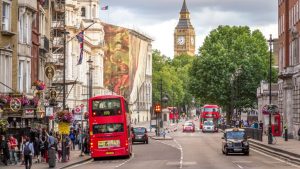Our client, an engineering contractor, has successfully recovered a Corporation Tax benefit of more than £65,000 to reflect time and effort spent on innovative activity.
During this accounting period, our client has been involved in a number of contracts where it has been required to depart from standard practices and devise a technological solution that did not then exist.
All new technological solutions involved research and development activity- time and money on developing a new concept, planning ways to make it work and trialling and testing new methodologies with resulting success and/or failure. One of the contracts undertaken during the accounting period required our client to manufacture and install steel work for the construction of a new hotel in London. The hotel was to be built on a busy street in central London and there was an existing hotel on site.

Our client was told that the old building was to be demolished however the site owner did not want the demolition works to be visible. Our client was told that the existing façade of the hotel was to be retained whilst the remainder of the building was to be demolished and the new hotel built in its place. Retaining the façade of buildings throughout demolition phases is a ‘non-standard’ approach to construction processes.
The specific space, time and material constraints for the hotel project meant that successfully developing a system to retain the façade would represent an advance in technological capability within the fields of construction / structural engineering.
The existing hotel was a terraced townhouse. Our client considered that the façade could be supported using a steel lattice that would attach to the gable ends of the adjoining properties however there was considerable uncertainty as to how to develop and install an effective lattice work system. There were complications caused by the constraints of the site which allowed access via the front only. This meant that the lattice would need to be delivered in smaller sections and installed whilst the old building was in situ.
Our client realised that this necessitated the development of a modular lattice work system with multiple connectors to adjoin the pieces together however there was uncertainty as to how to achieve the requisite strength through a modular framework. Our client realised that the use of connectors creates weak points within any structure and it was not clear how this could be overcome. Research and development activity was carried out to assess the physical factors associated with the site, determine the connection points throughout the modular framework and decide upon the optimum choice of steel for the lattice itself.
Calculations and modelling was carried out to assess the end loads to which the lattice and connectors would be subjected. This assessment work was carried out through a combination of mathematical calculations and 3D modelling. During the project, it was discovered that ensuring a secure connection was challenging due to the gable ends consisting of old and worn ‘London Brick’.
The optimal (most secure) choice of resin for the combination of end loads and quality of connecting masonry was uncertain. Therefore, the calculations and modelling extended to assessing how alternative grades of resin would potentially perform when in use. During the installation process, further research and development activity became necessary when it was discovered that space restraints meant that the lattice system could not be easily installed. The weight of the winch was restricted by the strength of the hotel floors.
It was uncertain how to address these tensions between the winch system and design / configuration of the lattice systems. Work was carried out to determine how to overcome this challenge. The outcome of our client’s research and development activity was positive and the brief delivered.
Corporation Tax Saving- £65,000+
To download a copy of this case study, please click here


